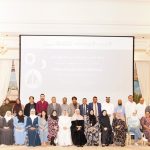Developing confidence and self-esteem is a common struggle for many individuals, especially during adolescence. Two young women, Shweta Kinkale and Zain Basalat, shared similar experiences but were influenced by different factors that shaped their perceptions of beauty and self-worth. Shweta, an e-commerce writer in Dubai, faced societal pressure related to her appearance from a young age, while Zain, a journalism student, was impacted by unrealistic beauty standards portrayed on social media. These experiences led them on separate journeys towards self-acceptance and confidence.
Both Shweta and Zain reached a turning point when they opened up to their parents about their insecurities. Dr. Saqib Latif, a Clinical Lead Children Services and Consultant Child and Adolescent Psychiatrist, emphasized the importance of providing adolescents with a safe space to express their doubts and vulnerabilities without judgment. Open communication and validation of feelings can help normalize insecurities and uncertainties that young individuals may face during their development.
Parents play a crucial role in nurturing positive self-worth in their children. By praising their children for their character traits and actions rather than solely focusing on their appearance, parents can help build a more robust sense of self-esteem. Dr. Latif explained that instilling a sense of belonging and acceptance within the family unit lays a strong foundation for confidence and self-esteem in children. Creating a supportive environment where children feel psychologically safe and valued for who they are beyond their looks is essential.
The impact of external influences, such as unrealistic beauty standards in media and digital manipulation, can further exacerbate adolescent insecurities. Zain’s experience with undergoing plastic surgery at a young age to align with societal beauty standards reflects the detrimental effects of comparing oneself to unattainable ideals. Dr. Latif emphasized the importance of proactive conversations about beauty standards and media literacy to help teenagers differentiate between real and edited images online.
Learning from their experiences, both Shweta and Zain continue to navigate their paths towards self-acceptance and confidence. While Shweta finds strength in her supportive parents, Zain’s journey included therapy and self-help resources to address deeper issues related to Body Dysmorphic Disorder. Through therapy, self-reflection, and limiting social media exposure, Zain has learned to prioritize her self-worth beyond physical appearance and embrace her unique qualities. Choosing wisely in what one consumes, whether it’s media or self-talk, can significantly impact one’s self-esteem and overall well-being.
In conclusion, the stories of Shweta and Zain highlight the importance of parental support, open communication, and self-reflection in nurturing confidence and self-acceptance in adolescents. By promoting positive self-worth based on values and character rather than appearance, parents can help young individuals navigate the challenges of insecurity and comparison in today’s media-driven society. Building a strong sense of belonging, fostering media literacy, and seeking professional help when needed are essential steps towards cultivating a healthy self-image and nurturing resilience in youth.











